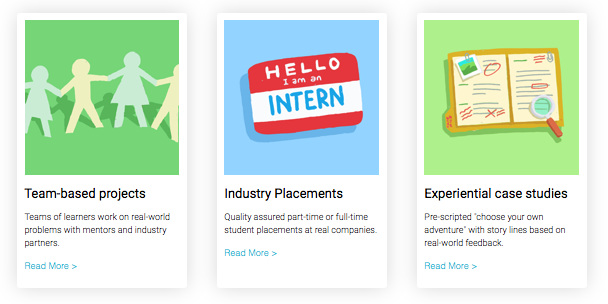Beyond traditional internships and professional placements there are a variety of experiential learning options that bring industry into the classroom, provide real-work contexts for practice and support critical reflection. Like classroom curriculum that starts with introductory material before progressing to advanced, experiential learning can be scaffolded in order to build up competency prior to students participating in a full placement or internship. Institutions who effectively scaffold their experiential learning will enable more students to be successful over the longer term.
Experiential learning has a wide range of applications, each of which has many variations. Different models of experiential learning can be characterised as being at different levels of ambiguity, personal agency and scalability. They fulfil different learning needs and offer different types of experience for the student.
Here:

- Personal agency – means the degree of influence the participants (students & mentor) have on the objectives, scope, activities of the experience, and how customised the outcome can be.
- Ambiguity – means the degree of structure, procedural certainty and activity support available to the student as they go through the experience.
- Scalability – the relative cost per student of the experience. An entirely digital, structured, infinitely repeatable experience is more scalable.

